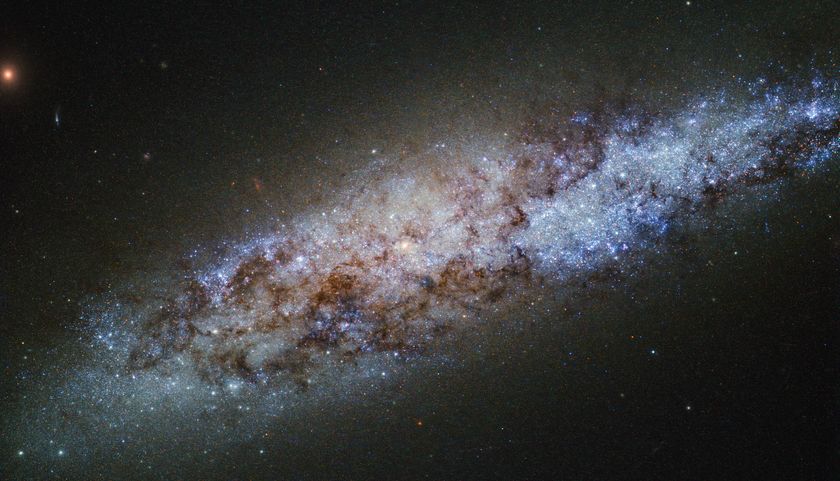Retro NASA Travel Posters Invite You to Real Alien Worlds
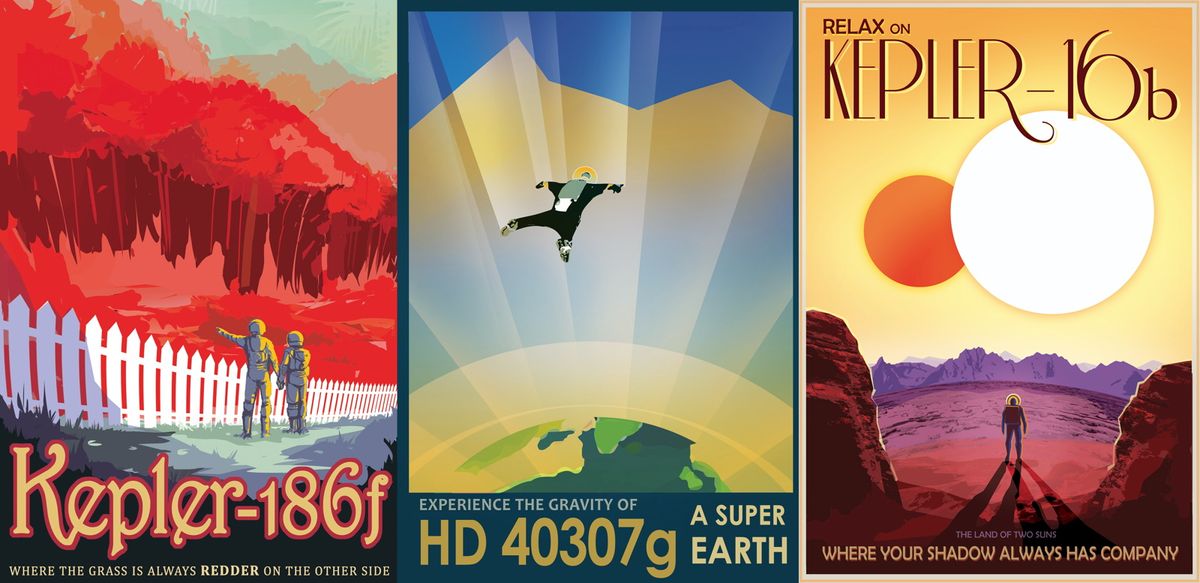
SEATTLE — Travel to distant alien worlds with two suns, red grass and strong gravity in three retro exoplanet posters produced by artists working with NASA.
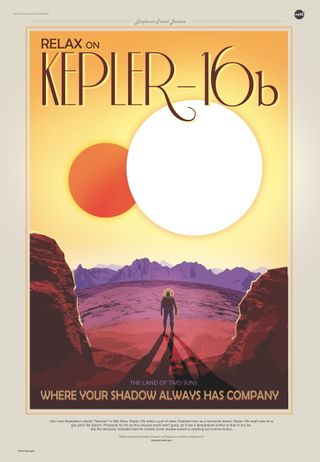
The three posters — created by Joby Harris and David Delgado, visual strategists at NASA's Jet Propulsion Laboratory in Pasadena, California — feature artistic renderings of what it might be like to stand (or fly) on one of a trio of imagination-capturing alien worlds.
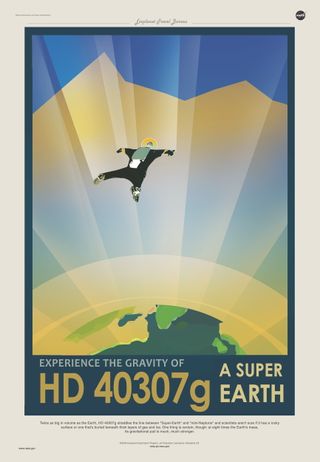
One of the posters depicts Kepler 186f, a planet sometimes called "Earth's cousin." The exoplanet is slightly larger than Earth, and circles a star smaller and dimmer than the sun. The planet is the first small planet discovered in what might be its star's habitable zone — the area around a star that would allow a planet to support liquid water on its surface. The artist's depiction of the planet shows a world covered in red grass. [Exoplanet Art from the Mind of Lynette Cook]
"If plant life does exist on a planet like Kepler 186f, its photosynthesis could have been influenced by the star's red-wavelength photons, making for a color palette very different than the greens on Earth," the poster's planet description reads.
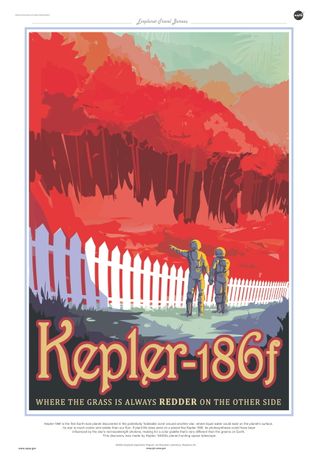
Another retro poster shows a skydiver flying high above the super-Earth HD 40307g, an exoplanet that eight time more massive than Earth. NASA officials don't know if the planet is rocky or has a surface "buried beneath thick layers of gas and ice," according to the poster. The planet's massive size means that its gravitational pull is very strong, making skydiving a potentially thrilling (and even scary) feat.
An astronaut marvels at the twin suns of the planet Kepler 16b. The world orbits two stars like Tatooine in the movie "Star Wars," but Kepler 16b might not be as life-friendly as the home of Luke Skywalker.
"Prospects for life on this unusual world aren't good as it has a temperature similar to dry ice," the NASA poster says. "But the discovery indicates that the movie's iconic double-sunset is anything but science fiction."
Get the Space.com Newsletter
Breaking space news, the latest updates on rocket launches, skywatching events and more!
NASA officials printed out copies of three of the retro posters to pass out here at the 225th meeting of the American Astronomical Society, but they are not available for purchase. You can download the images to create your own posters directly through NASA's PlanetQuest website here.
Follow Miriam Kramer @mirikramer. Follow us @Spacedotcom, Facebook and Google+. Original article on Space.com.
Join our Space Forums to keep talking space on the latest missions, night sky and more! And if you have a news tip, correction or comment, let us know at: community@space.com.

Miriam Kramer joined Space.com as a Staff Writer in December 2012. Since then, she has floated in weightlessness on a zero-gravity flight, felt the pull of 4-Gs in a trainer aircraft and watched rockets soar into space from Florida and Virginia. She also served as Space.com's lead space entertainment reporter, and enjoys all aspects of space news, astronomy and commercial spaceflight. Miriam has also presented space stories during live interviews with Fox News and other TV and radio outlets. She originally hails from Knoxville, Tennessee where she and her family would take trips to dark spots on the outskirts of town to watch meteor showers every year. She loves to travel and one day hopes to see the northern lights in person. Miriam is currently a space reporter with Axios, writing the Axios Space newsletter. You can follow Miriam on Twitter.

